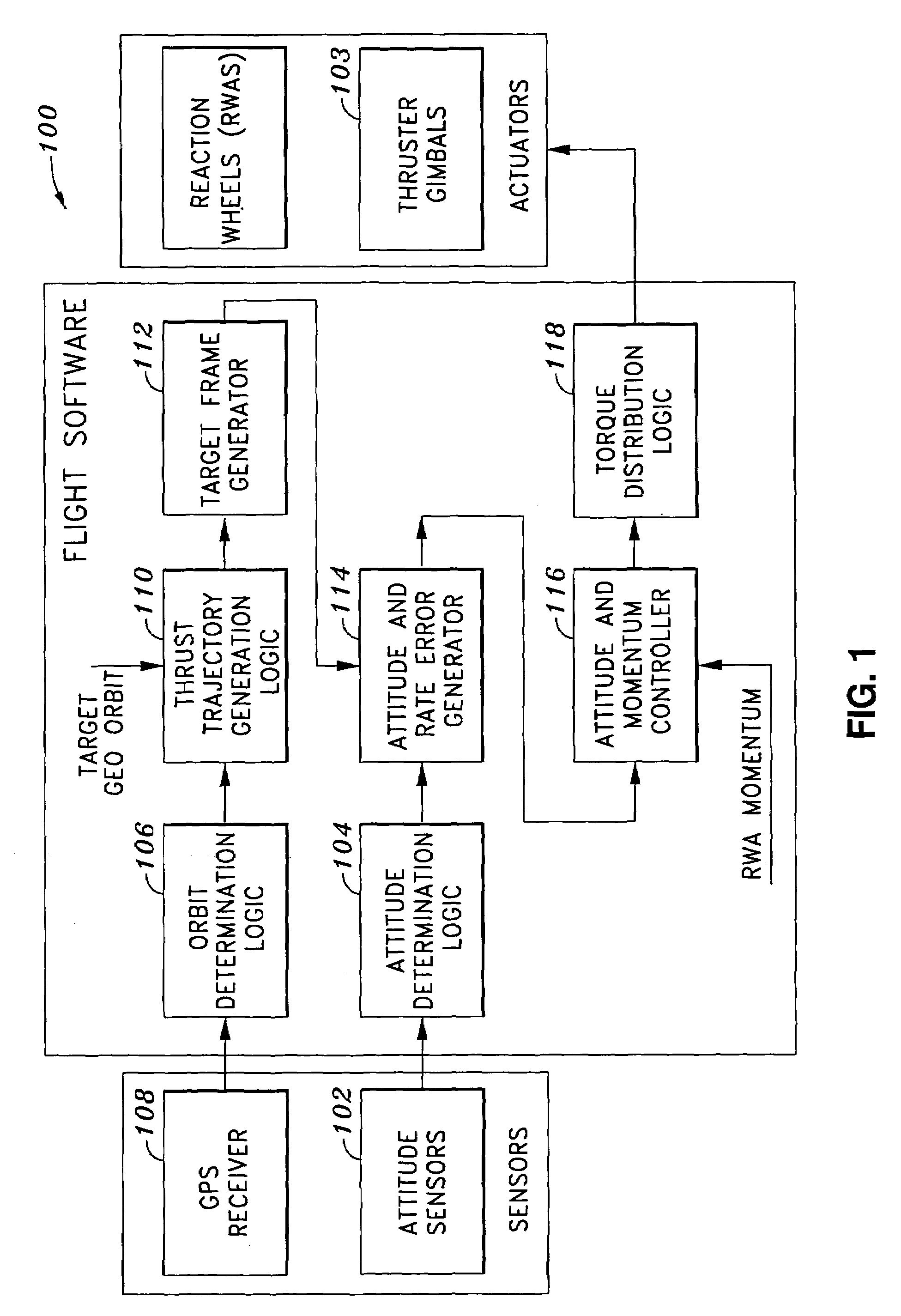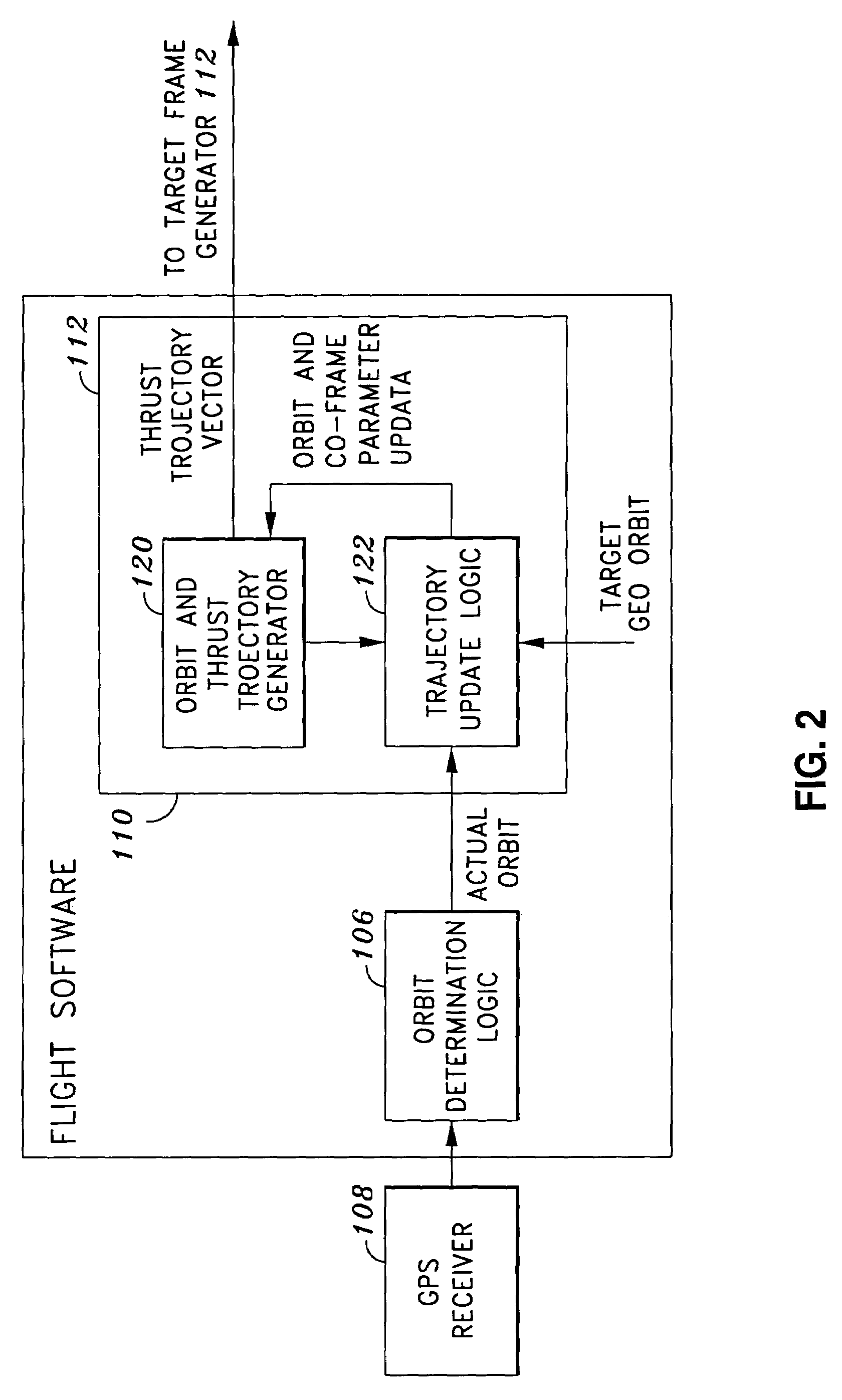System and method of substantially autonomous geosynchronous time-optimal orbit transfer
a geosynchronous time-optimal and orbit transfer technology, applied in the field of orbiting spacecraft, can solve the problems of requiring a potentially large and highly skilled ground support staff, affecting the efficiency reducing the requirements for range data collection, etc., to achieve the effect of reducing the coverage of the ground station, improving fuel efficiency, and reducing the requirement for range data collection
- Summary
- Abstract
- Description
- Claims
- Application Information
AI Technical Summary
Benefits of technology
Problems solved by technology
Method used
Image
Examples
Embodiment Construction
[0014]FIG. 1 is a block diagram of a system 100 according to the invention. The system 100 is applicable to different types of spacecraft including geosynchronous spacecraft or any spacecraft that executes a time-optimal orbit transfer by continuous or near-continuous firing of thrusters.
[0015]To determine the spacecraft inertial attitude, the system 100 processes data from sensors 102, that may include earth sensors, sun sensors, star trackers, and an inertial measurement unit (IMU), all being conventional. The earth sensors, sun sensors, and star trackers provide direct attitude measurements, and the IMU provides angular rate information. This processing is carried out in an Attitude Determination Logic 104, implemented in the flight software in a preferred embodiment.
[0016]An Orbit Determination Logic 106 processes measurements from a conventional GPS receiver 108 and provides estimates of the spacecraft orbit elements based on an orbit dynamics model and knowledge of the applied...
PUM
 Login to View More
Login to View More Abstract
Description
Claims
Application Information
 Login to View More
Login to View More - R&D
- Intellectual Property
- Life Sciences
- Materials
- Tech Scout
- Unparalleled Data Quality
- Higher Quality Content
- 60% Fewer Hallucinations
Browse by: Latest US Patents, China's latest patents, Technical Efficacy Thesaurus, Application Domain, Technology Topic, Popular Technical Reports.
© 2025 PatSnap. All rights reserved.Legal|Privacy policy|Modern Slavery Act Transparency Statement|Sitemap|About US| Contact US: help@patsnap.com



